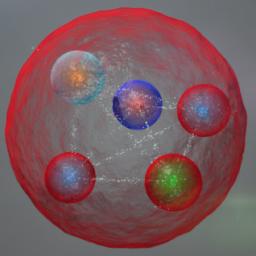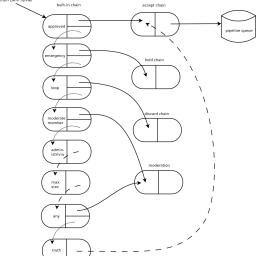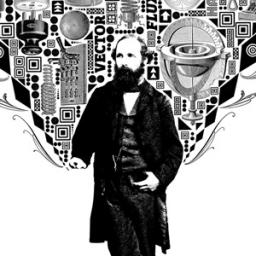
On Monday, Google
announced the release, as an opensource project (Apache License), of
TensorFlow.
According to Google, TensorFlow is their next-gen machine learning system, fixing the shortcomings of DistBelief, the AI system behind several of Google tools such as speech recognition on Android (think "OK Google"), description-based image search in Google Photos or even automatic email reply suggestions.
From the official announcement:
TensorFlow has extensive built-in support for deep learning, but is far more general than that -- any computation that you can express as a computational flow graph, you can compute with TensorFlow (see some examples). Any gradient-based machine learning algorithm will benefit from TensorFlow's auto-differentiation and suite of first-rate optimizers. And it's easy to express your new ideas in TensorFlow via the flexible Python interface.
note:
"Deep Learning" is what used to be called
"Artificial Neural Networks", but on steroids.
More technical explanations are available in their
whitepaper and code is on
GitHub.

After restarting to run at higher power than ever, the Large Hadron Collider
has made its first proper discovery. Today, a team of scientists
announced that they've found a new class of sub-atomic particles known as
pentaquarks, a particle composed of four quarks and an antiquark.
From
BBC:
It was first predicted to exist in the 1960s but, much like the Higgs boson particle before it, the pentaquark eluded science for decades until its detection at the LHCb experiment. The findings have been submitted to the journal Physical Review Letters.
The
LHCb experiment is an experiment set up to understand what allowed matter to survive (as opposed to antimatter) by studying the properties of quarks.

(Finally) after years of development,
Mailman has reached its
third release.
It's a big change, thoroughly explained in this
(not so) old article by Barry Warsaw, the lead developer behind Mailman 3.0. In short, Mailman has been organized as a suite of 5 subprojects, each in charge of a different aspect:
- Mailman Core - the core delivery engine which accepts messages, providers moderation and processing of the messages, and delivers messages to mailing list member recipients. It exposes its functionality to other components over a private, administrative REST API.
- Postorius - A new Django-based web user interface for end users and list administrators.
- HyperKitty - A new Django-based web archiver.
- mailman.client - The official Python 2 and 3 bindings to the administrative REST API. Used by Postorius and HyperKitty, this provides a convenient, object-based API for programmatic access to the Core.
- mailman-bundler - A convenient package for building out the entire Mailman suite.
Among the new shiny things:
What's new about Mailman 3? Well, lots! Some highlights include:- Backed by a relational database;
- True support for multiple domains, with no cross-domain mailing list naming restrictions;
- One user account to manage all your subscriptions on a site;
- The core's functionality exposed through an administrative REST+JSON API;
- All passwords hashed by default, and no monthly password reminders!
- Users can post to lists via the web interface;
- Built-in archive searching!
and more. Tons more.
Note that it is not recommended to update your lists from 2.x to 3.0 zero yet as it may not go smoothly. The update feature is planned for 3.1 but if you've got some test machine, feel free to play around with the update and report bugs.
[submitter's note]: some details in the announcements seemed a bit weird to me, notable, I quote, "The core requires Python 3.4 while Postorius and HyperKitty require Python 2.7.". Why use two different (and maybe incompatible) versions of python ? Another one is about the API numbering scheme. Well, we'll see how it goes ...

IEEE Spectrum has an interesting and detailed article about
the long road to Maxwell's equations. It's
not a text full of lengthy demonstrations and mathematical jargon (don't worry there are still some formulas), if anything it's a story of physics and mathematics spread across the nineteenth century.
It explains how, from observations made by
Faraday and others,
Maxwell deduced a set of
20 complex equations describing the electrical and magnetic fields. These equations almost fell into oblivion because of both their complexity and the lack of experimental evidences for the brand new concepts introduced (e.g. electromagnetic waves can propagate without a medium, light is just one of them, etc.). They were only saved thanks to a few passionate scientists,
the Maxwellians, notably
Heaviside who managed to simplify and sum them up into the well-known 4 equations that we all read once in some introductory engineering or physics textbook.
More than 3 years ago, January 2011,
ffmpeg was
forked by a part of the development team into
libav. Then, by the end of that year, the fork had replaced FFmpeg in Debian's packages, with, notably, the binary in the ffmpeg package marking itself as deprecated and recommending users to use avconv instead. As the split didn't happen in the most friendly way (to say the least), these events sparkled a lot of debates and flames and it is quite difficult to find articles on the topic that are not biased one way or the other.
In November 2013, a
bug report was filed for Debian to
reintroduce an actual ffmpeg package and all the associated libraries. Fast forward to mid-September 2014, after some technical discussions and soname changes (all ffmpeg-related libraries with a
libav* name have been renamed into
libav*-ffmpeg),
ffmpeg has been quietly reintroduced in Debian unstable and it might even be
just in time to be included for release in Jessie.
Let's hope this solution where both versions can co-exist will help calm things down.

Stem cells are not only about
scandals, deaths and retracted publications. There is a lot of research going on and new medical applications are regularly presented in the news as "tomorrow's revolution".
This week, a Japanese team has taken a new step towards actually using
induced pluripotent stem cells (iPS), for which Shinya Yamanaka and John Gurdon shared a Nobel prize in 2012. On Wednesday, Nature
announced that a Japanese patient was about to receive iPS-based eye surgery, a test on human for which permission had been granted by a health-ministry committee.
The surgery took place this Friday.
[Author note: As a side note, the team belongs to the same research center (CDB) from which the author of the retracted STAP papers originated]
 On Monday, Google announced the release, as an opensource project (Apache License), of TensorFlow.
On Monday, Google announced the release, as an opensource project (Apache License), of TensorFlow.


